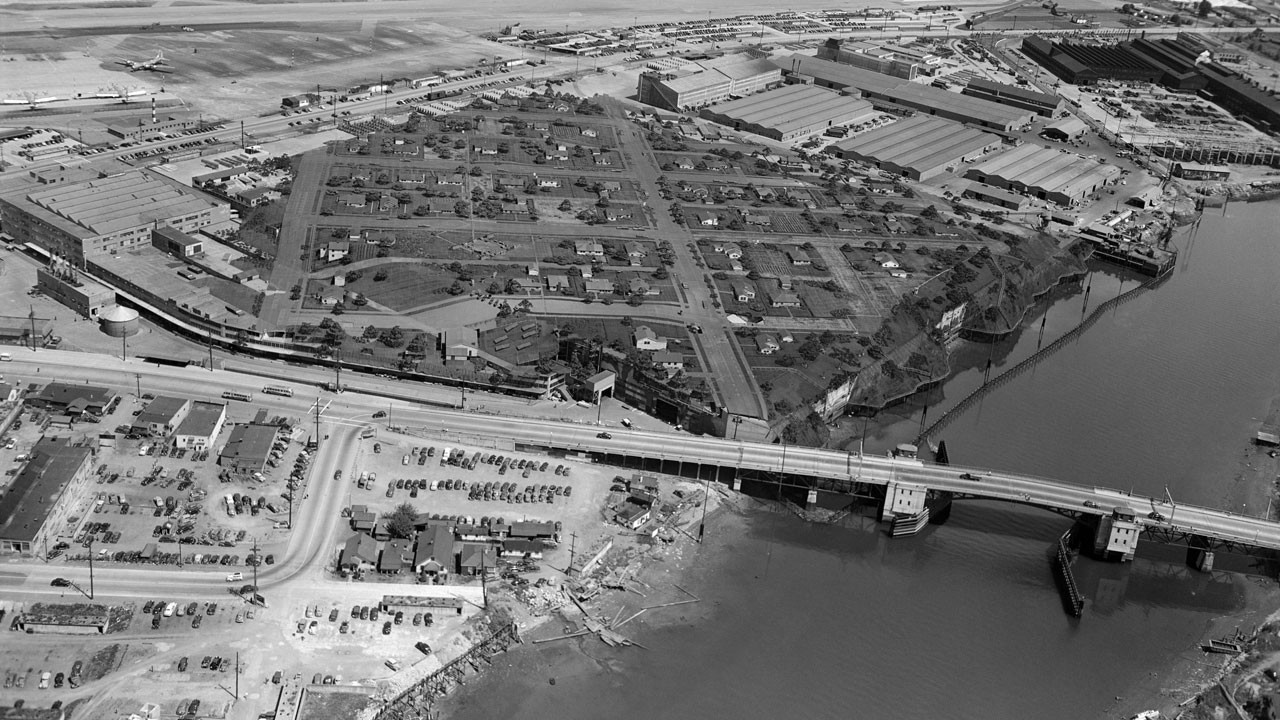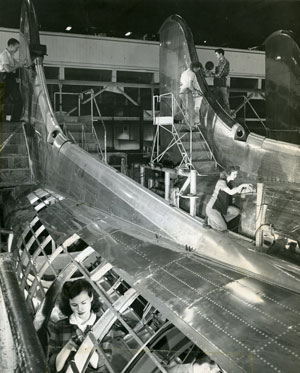In 1913, the Commercial Waterway District No. 1 began rechanneling the Duwamish River by excavating and dredging more than 20 million cubic yards of mud and sand. Within a few years, the Duwamish was transformed from a nine-mile, shallow and meandering river to a five-mile engineered waterway.
The soil excavated during the rechanneling, combined with an additional four million cubic yards removed during the re-grading of Jackson and Dearborn streets, was used to construct the 350-acre Harbor Island which separated the mouth of the waterway into two separate channels.
With the wider and deeper Lower Duwamish Waterway, sea vessels were now able to move beyond Elliott Bay into what would eventually become the industrial and commercial core of Seattle. The Duwamish Waterway enabled a century of development in Seattle’s principal commercial district. The waterway is a hub of activities that have included cargo handling and storage, marine construction, ship and boat manufacturing, concrete manufacturing, paper and metals fabrication, food processing and countless other industrial operations over the years.

